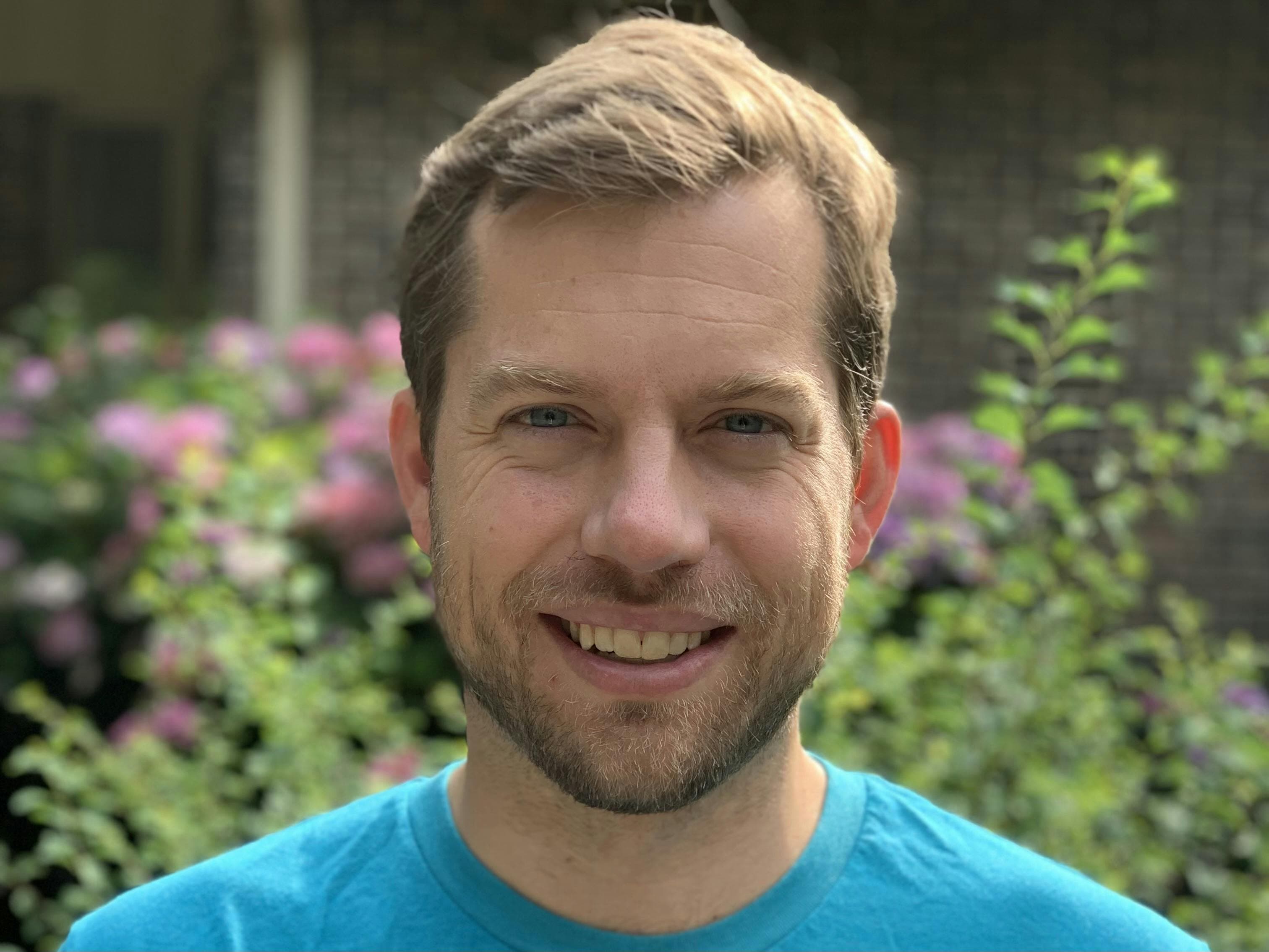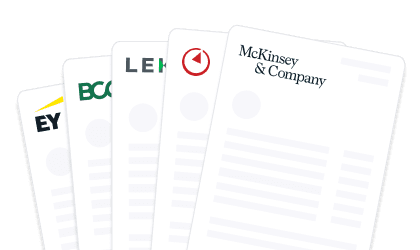Top 3 Tactics to Ace Your Case Interview
Management consulting recruiting season is upon us and the reality is, most people don't make it past the first round. Follow this advice from a former Senior Manager at Bain to nail your case interview.

By Chip L.
Former Bain SM will help you crush the case
Posted June 13, 2025

Join a free event
Learn from top coaches and industry experts in live, interactive sessions you can join for free.
Management consulting recruiting season is upon us and the reality is that it’s difficult for most people to make it past the first round–the case interview–and through to the second round. As a former interviewer for Bain, I know we only took two or three people from each “slate” of 12.
What separates those two or three with the gold star from the others is only a very slim margin. Usually, the others are still pretty solid. They have the process down: use a scrap piece of paper, have a framework, write down your math, and give a recommendation. However, doing these things alone is not enough to get you through.
So, how do you get the gold star by your name? You need to rack up enough high-level points across several dimensions and “wow” your interview. Here’s how you can do it.
Involve the interviewer as if they were your manager on a case team
The consulting case interview is intended to simulate the real-life, problem-solving situations that we as consultants encounter every day. As part of that, you want to make the interviewer feel as if you were actually in a conference room on a case, working together.
- When it’s time to do the math, don’t just write down the math. Do it out loud. The worst thing you can do is the math in your head. The second worst thing you can do is silently write down the math. The best thing you can do is work through the math with your interviewer out loud, walking them through what you’re doing. This invites them to be a part of your process and allows them to intervene if something goes awry.
- Brainstorm with them. Usually, there will be a time to brainstorm alternative ideas late in the case interview. Use this space to invite your interviewer to opine on your ideas. Your interviewer loves to brainstorm, too!
- Be bold with how you involve them, to a point. Don’t be afraid to look up at them, prod them, and ask them questions like, “Does that sound reasonable to you?” This is how you would really act with your manager in a real case, and doing so in the interview will make you more memorable. It also breaks the monotony for the interviewer of not being involved in the vast majority of cases.
Weave a cohesive narrative throughout your interview that is capped off by your recommendation
The worst recommendations are the ones that come out of nowhere and the interviewer is blindsided. How do you avoid this? Follow a couple of key steps:
- Have an Answer First (initial guess/hypothesis) and write it down. Everyone will have a framework at the beginning, or an explanation of the areas you will probe. But, before you start, pause and give a simple guess at the case. If it’s a profitability problem, you might say, “I don’t think the cost is a challenge here, I think the company is struggling to grow customer lifetime value.” It doesn’t need to be more complex than that, and you don’t need to linger here. Just write it down in a box to memorialize it.
- Continuously revise your guess after each phase of the case. Once you receive a new piece of data or insight, and before you move on to the next part of your framework, consciously stop and think, “Okay, this told me that revenue growth is not a problem, so let me go back to my hypothesis. Now, cost is more of an issue.” Physically, flip back to your hypothesis.
- At the end, your recommendation should be a natural extension of what you have already summarized. If you have done this correctly, both you and your interviewer will know where your answer is coming from, because you will have revised your hypothesis several times along the way. It also makes for a lighter and more seamless way to end the case, vs. a lengthy, surprise recommendation.
Showcase your creativity
The business problems that top management consulting firms solve require high levels of creativity, not just analytics. You want to show the interviewer in discrete places that you have the ability to think outside the box.
- Build creativity into your framework. I would not advise creating a brand new framework; but, within a relatively “standard” framework, work in bullets or points that are interesting and fresh. Even if you don’t end up exploring them down the line, it wins you points early for creativity.
- Take advantage of the brainstorming session. There will be a time, usually in the last third of the case, where a question like, “Any other potential ideas?” comes up. This is a critical point at which you should get out a fresh piece of paper and write down creative ideas. This doesn’t mean rattling off ten random things. Focus on going slow and laying out three to four high-value, innovative ideas. You can even weave in real-world examples here. For example, “I saw XYZ company do this and succeed, and it might apply here.”
If you follow these steps, you’ll be well poised to impress your interviewer and get through to the second round. I love doing case interviews and helping you improve your tactics. If you’d like to work with me one-on-one for any guidance on the consulting application, hiring, or interviewing processes, book a free intro call on my profile to get started!
Here are some other articles you may find helpful:

Written by Chip
5.0
(84)
tl;dr: I am an ex-management consultant turned entrepreneur who loves making awesome consumer goods. I am uniquely positioned to help you: 1. Get into top MBA programs (including especially Kellogg) by infusing more personality, passion, and simplicity into your storytelling, 2. Prepare for interviews and succeed at top management consulting firms, and 3. Navigate career transitions, particularly to entrepreneurship. I will be invested in your success. I've done almost any job you can think of. I was an investment banker at the top Restructuring Group in New York, a private equity investor at one of the largest middle market firms, and an operator within the portfolio of the private equity firm, all before business school. I launched a viral male romper business called Romphim, raising $400K on Kickstarter in a week, and ran it for 6 months. I led teams at Bain & Company as a management consultant and developed associate consultants into top bucket performers. I've started a venture-backed jewelry brand and my own venture capital firm. Through it all - I've not only figured out business a bit more, but I've found what truly drives me. I think this is important to anything you will do. Business school: I got my MBA from Kellogg and think getting your MBA can be really valuable generally, but it depends on timing, where you are in your career, and what you want out of it. I don't think you can quantify the "ROI" of an MBA - you'll have so many experiences and meet so many people that it will impact your life in more ways than the bottom line. Whether or not you are in the middle of applying and need help crafting your application strategy, or business school is farther off and you want to discuss if it's the right choice for you, I can help. Management consulting: After Kellogg I worked for 3.5 years at Bain, and understand what it takes to succeed at some of the most challenging (but also awesome, rewarding) institutions in the world. At Bain, we were pushed to be zero defect, use hypotheses to guide our work, and develop others around us. If you are thinking about pursuing a career in management consulting, I can help you navigate the interview process and prepare you for success at these firms. Entrepreneurship: I've also found my passion for entrepreneurship, even though it took me awhile. If you are considering a career in entrepreneurship (or start-ups) I can talk you through things like: a framework I am passionate about those I mentor and want to be invested in helping you find whatever it is you are looking for. Hit me up! Discount for all first-time sessions.
Chip has helped clients get into organizations like:
Browse hundreds of expert coaches
Leland coaches have helped thousands of people achieve their goals. A dedicated mentor can make all the difference.


























